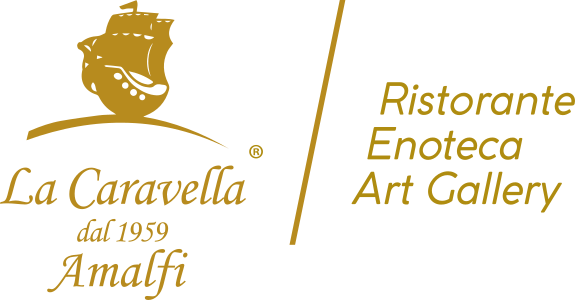A fascinating journey edited by Enzo Biffi Gentile, an internationally renowned art critic
“Writing about La Caravella Restaurant on the occasion of the sixtieth anniversary of its opening, and its current owner Antonio Dipino, the founder’s son, is not an easy task: we are facing a case in many ways unique, and not only at national level, of interference between different disciplines: the history of cooking, material culture, and applied arts, starting from the oldest and perhaps the greatest among them: ceramics”.
“Caravella went through a more normal phase of relations with the world of culture and art, during the management of Antonio’s father, illustrated by the contributions of illustrious poets such as Salvatore Quasimodo, who gave his name to a legendary dessert stiserved to this day, the soufflé Il sole nel piatto, and Alfonso Gatto, or by the constant presence of world-class novelists and essayists such as Gore Vidal; and a first collection of works by artists, decorators and ceramists. Among the latter, with the author of the first intervention Pierino Pisapia, who in 1959 made the sign, we should mention, for the purposes of our speech, especially one, now forgotten: Alberto Sassone, a former student of the “Giovanni Caselli” Institute in Naples, who preserves and revives a glorious tradition in the Park of Capodimonte, the same building that was the seat of the first Royal Factory of Bourbon Porcelain”.
“Antonio Dipino made a courageous decision: that of not remaining just an amateur or a lover, but to become an operator in the sector and in the art ceramics market. That did not only mean following another current trend in many high level restaurants: that of putting on sale goblets and containers that patrons had appreciated by desiring. He wanted to offer not so much soup tureens, but sculptures: so in 2009 he decided to open a space exclusively for galleries near La Caravella”.
“In short, the Caravella Art Gallery has become the external Hall of Honour of that artistic-industrial aristocracy of Vietri sul Mare, which has its monumental Palace in the Fabbrica Ceramica Artistica Solimene designed by Paolo Soleri”.
“La Caravella is on the one hand a starred restaurant, but on the other a gallery of applied arts -in Italy infrequently- directly run. All in all, today we find ourselves in front of a museum-restaurant, not a restaurant-museum. A resounding exception to the rule: in this case, by inverting the order of factors, the product changes. So, historically, we are faced with a model of creativity and management elsewhere, everywhere, non-existent”.
